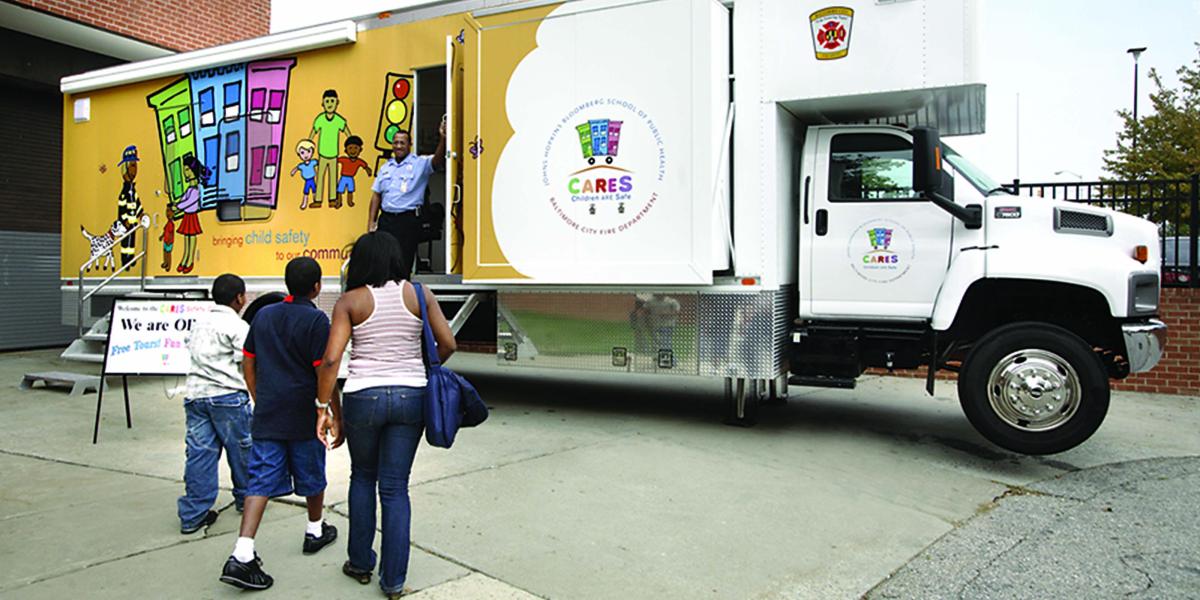Safety Messages Go Mobile
From house fires to poisonings to car crashes, the biggest threat to the health of children in the U.S. is unintentional injury. Even more troubling is the fact that many injury-related deaths can be averted simply and inexpensively with devices like smoke alarms, cabinet locks and car safety seats.
Research shows that children in low-income urban settings are especially vulnerable to injuries. They're more likely to live in substandard housing, and parents and caregivers frequently don't have access to accurate information on injury prevention and affordable safety products.
In Baltimore, low-income children under age 6 suffer nearly twice the rate of injury compared to the national average, according to a 2002 study conducted by the Bloomberg School's Center for Injury Research and Policy.
Two years ago, in an innovative effort to spread the life-saving message of injury prevention to Baltimore families, the center transformed a 40-foot vehicle into a house on wheels called the Johns Hopkins CARES (Children ARE Safe) Safety Center. The mobile safety center illustrates the dangers children face at home and teaches parents how to prevent some common unintentional injuries. "We know what works to prevent injury. We just need to know how to get it out to the community more effectively. This vehicle and the partnership that created it represent a new way to disseminate proven effective safety products and information," says Andrea Gielen, ScD, professor and director of the Center for Injury Research and Policy.
In its first year, nearly 6,000 people visited the mobile safety center, which makes scheduled stops at medical clinics and community venues. It features interactive exhibits of high-risk injury areas in the home and offers safety products for sale at below-retail cost.
Health educators use the center's kitchen, bathroom, bedroom and stairway exhibits to teach parents and children how to prevent burns, falls, strangulation and other accidental injuries in the home, as well as in the car and the neighborhood. The bedroom, for example, features a smoke machine for use in teaching fire escape skills, and parents learn to adjust temperature settings on a real water heater. The Baltimore City Fire Department helps to operate the mobile safety center and provides fire safety education to visitors. The center was created through a community partnership between Hopkins, the fire department, the Maryland Institute College of Art, the Maryland Science Center and parent advisors.
The brightly colored trailer makes weekly visits to the East Baltimore Medical Center and also travels to schools, churches, health fairs and other sites. Center staff have distributed 550 home safety products and 126 car safety seats, referred 235 families to the fire department's free smoke alarm installation program and installed or checked 287 car safety seats.
The Center for Injury Research and Policy, which is seeking funding to continue the mobile safety center's services, is now conducting two studies to determine the impact the mobile safety center has on parents' child safety knowledge and practices. The findings will be of use in shaping future community-based child injury prevention strategies.
"We are learning how to better help families translate safety knowledge into action. If we can more effectively reach families with the information and life-saving products they need, we should see fewer childhood injuries, which is our ultimate goal," says Gielen.
